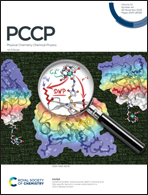S-Vacancy induced indirect-to-direct band gap transition in multilayer MoS2
Abstract
Two-dimensional (2D) MoS2 has various potential applications due to its attractive band gap of 1.29–1.90 eV and unique photoelectric properties. Furthermore, it is well-known that multilayer and bulk MoS2 structures possess an indirect band gap. In this paper, however, our first-principles calculations demonstrated that the creation of S vacancies in the multilayer and bulk MoS2 structures can achieve indirect-to-direct band gap transition, leading to a decrease in the band gap energies from 0.984–1.542 eV to 0.629–0.971 eV. Although the generation of Mo vacancies cannot cause such indirect-to-direct band gap transition, the Mo vacancies also decrease the band gap energies of the multilayer and bulk MoS2 structures to 0.369–0.460 eV. Furthermore, the band gap energy of the vacancy-defected multilayer MoS2 decreases with the increasing number of layers. Optical properties are also remarkably affected by atomic vacancies, that is, the absorption edges in the defect structures of MoS2 present a redshift and significantly enhance the visible light absorption compared to the corresponding pristine structures. These findings provide a novel approach to tuning the electronic structure and dielectric properties of MoS2 for specific future applications.



 Please wait while we load your content...
Please wait while we load your content...